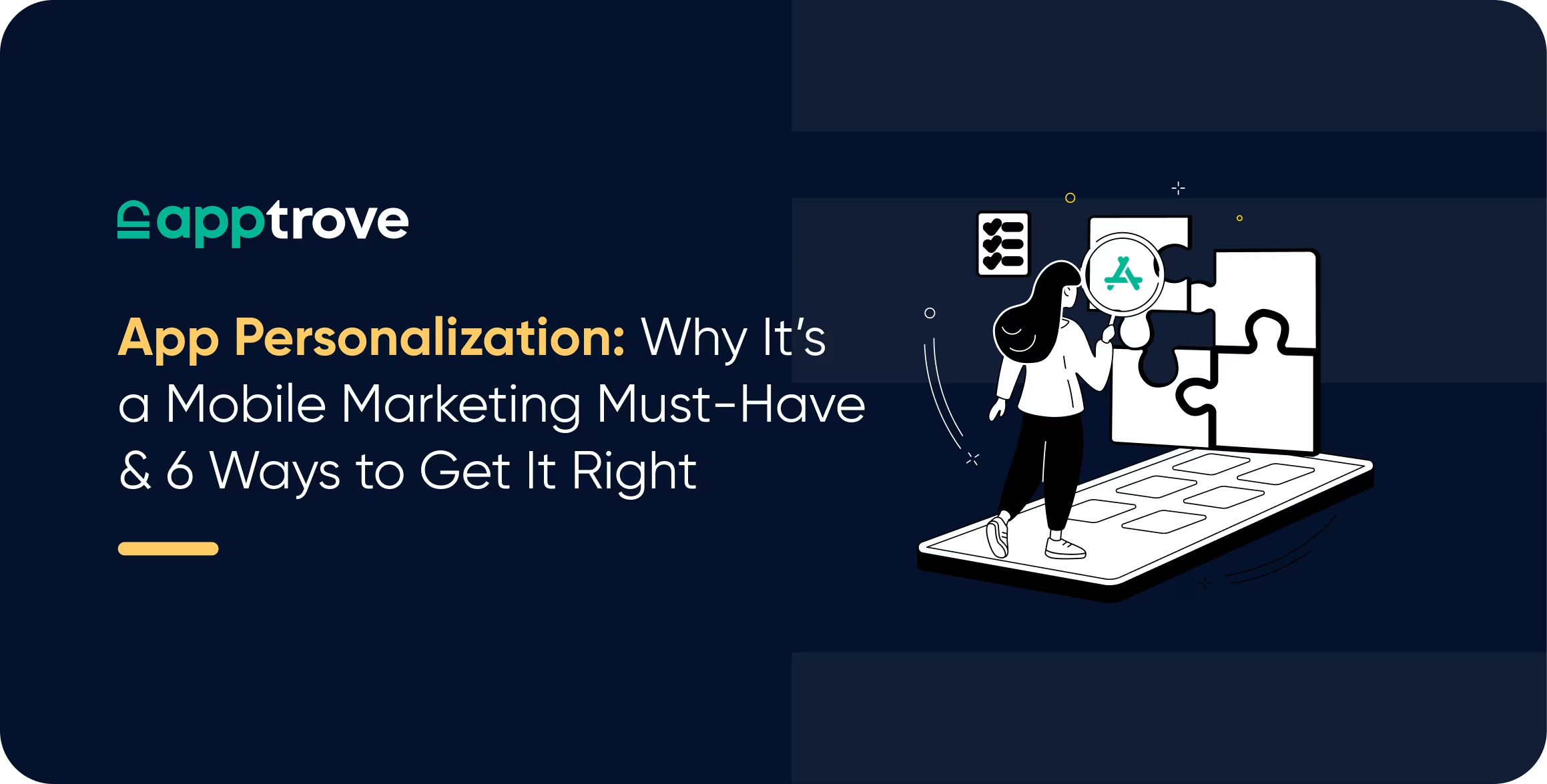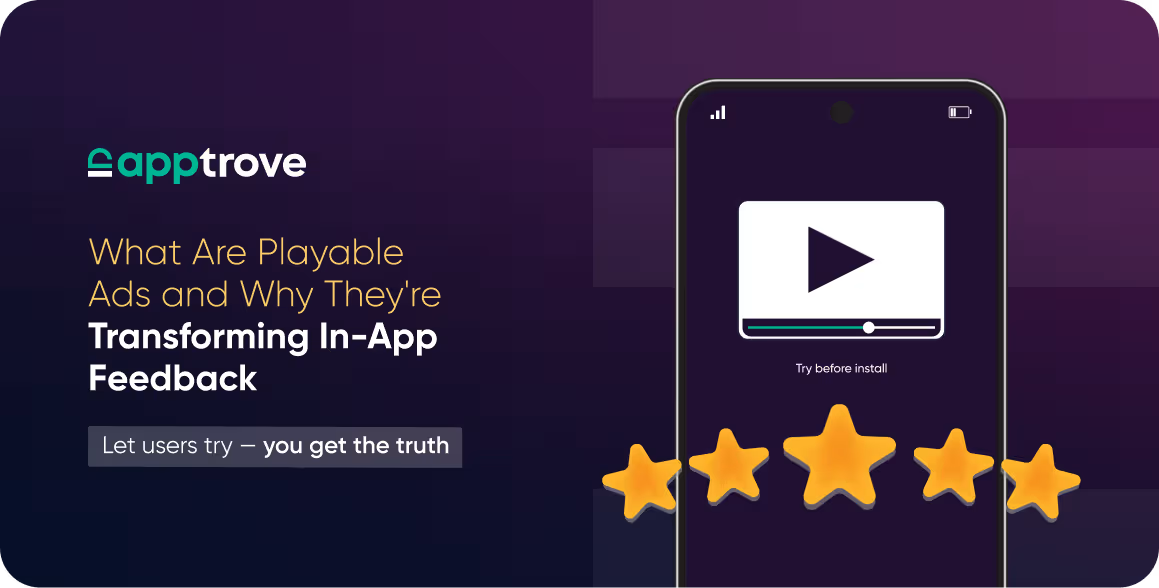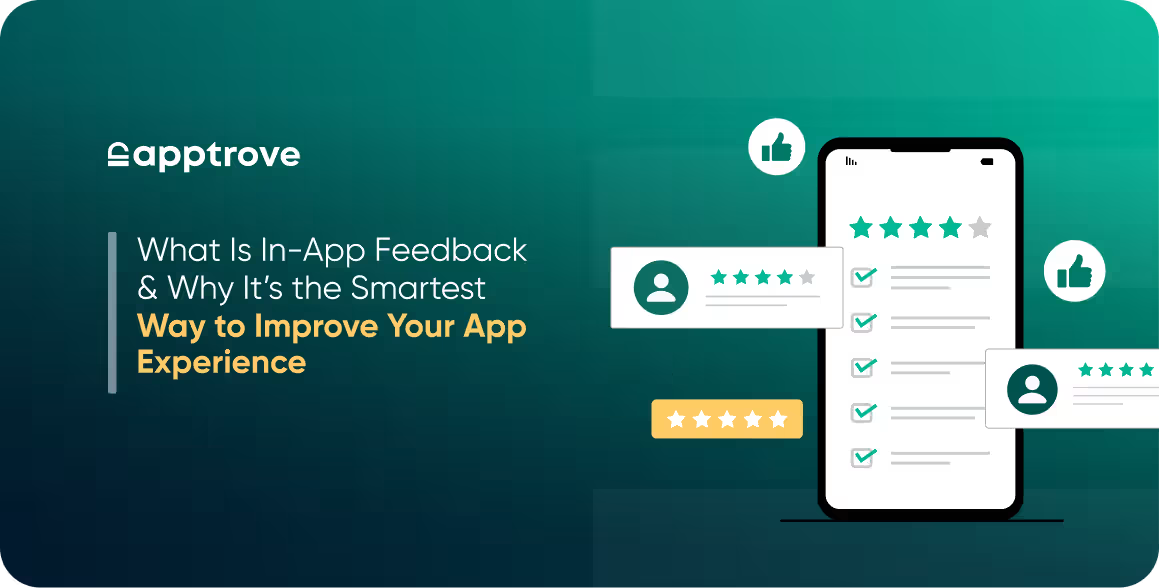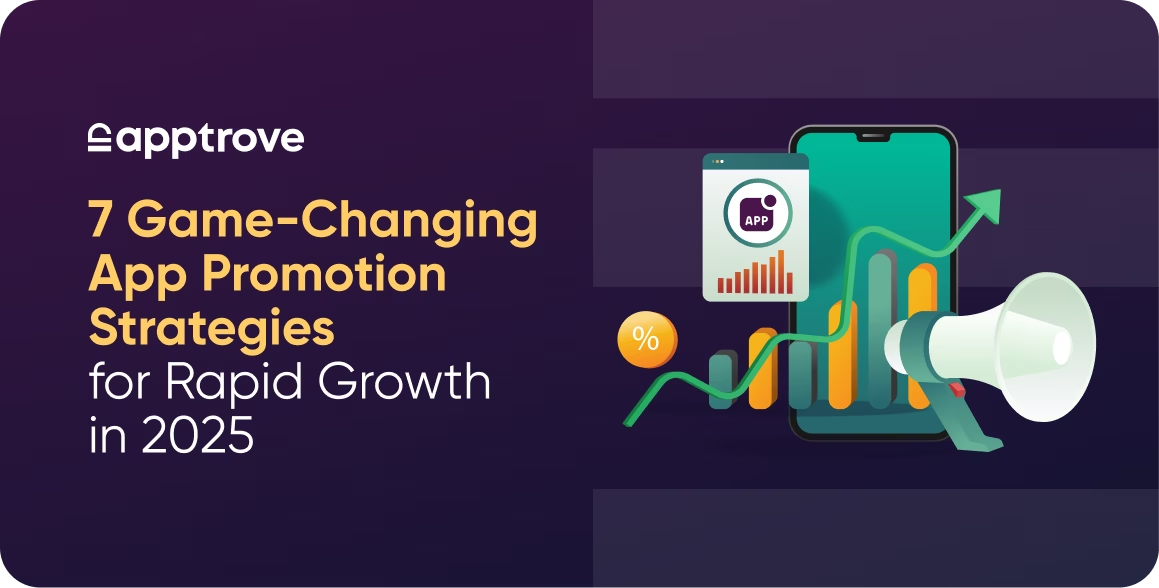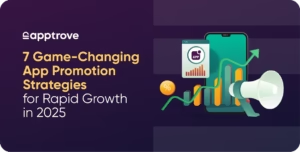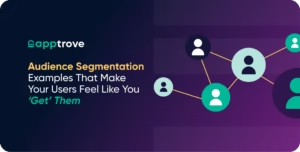The mobile app space is oversaturated, with over 5 million apps available on major app stores and the average user only interacting with just 9 apps daily, despite having 80 apps being installed on their devices. The situation is such that acquiring a user is 10x easier than keeping one.
In a world where competition is fierce and user attention spans are shrinking, app personalization is the variance between a successful app and an uninstalled app. When an app uses the interests, behaviors, and preferences of a user to customize a their experience, the app user feelsl valued, and every interaction becomes meaningful and relevant.
Every interaction, from taps to purchases, is an opportunity to learn something new about what users want. Apptrove makes app personalization easy for marketers by turning every user data point into rich, real-time experiences that drive results.
But what does effective app personalization look like, and how can you implement it? Let’s get into it.
What is App Personalization and Why is it Something Your App Needs?
Personalizing an app is no longer simply putting a user’s first name in an opening greeting. Lasting app personalization is about utilizing real-time, behavior-based information to purposefully evolve an app’s content, functionalities, and interactions to match each user’s taste, behavior, and situation.
Consider the classic example of OTT platforms, which seem to always be able to recommend the ideal movie you didn’t even know you wanted to watch, or a fitness app that plays audio workouts right when your schedule now allows. This isn’t customization where users manually adjust settings but rather a system that changes in real-time based on how people are actually using your app.
This distinction is important because it shifts the burden of optimization from the user to the app itself, creating seamless, intuitive experiences. What makes app personalization particularly powerful is its effect on user engagement.
Every personalized interaction generates additional data points that help make the next interaction the optimal experience, generating a tailored loop that inherently makes the app better and better for the user based on the way they behave. This is one of the reasons that personalized apps have 30-50% retention higher than apps without personalization and about 44% of users return to an app after they experience personalization.
Apps that do not provide personalized experiences often face high churn rates. Users abandon apps that they feel are not useful or relevant. Research has shown that users are more likely to engage and return to apps that offer personalized experiences. With the advancement of artificial intelligence and machine learning, personalization is becoming easier for brands to offer tailored experiences at scale.
What Makes App Personalization Important for Mobile Marketers?
Mobile users want experience that is personalized to them. Therefore, if your app feels generic, then users don’t have a reason to come back; however, if your app feels useful and engaged, users stick around.
User expectations have changed significantly over the last decade. With the advent of artificial intelligence (AI), machine learning (ML), and predictive analytics, brands can deliver significantly more personalization and are more likely to create a highly personalized engagement that ultimately leads to sustained user retention.
According to Deloitte, 80% of users are more likely to engage with a brand that delivers personalized brand experiences. When your app starts to adapt to an individual user, it then becomes a habit instead of a product.
Increasing User Engagement
With personalization, your users are likely to engage with your app at a higher level, since users will be interacting with content that feels most relevant to them. When an application delivers personalization and recommendations, users are more likely to access different features and make purchases, or to return to the application frequently.
A study found that 91% of shoppers are more likely to shop from businesses that recognize them, remember what their purchase and preference, and offer related offers and recommendations.
This is not unique to just e-commerce, but applies to all mobile apps, regardless of industry. Take, for example, the streaming platforms. These companies rely on personalization algorithms to recommend content based upon user behavior, resulting in longer session durations and increased user satisfaction.
Improving Retention and Lowering Churn Rate
Retention remains an enormous challenge for mobile app marketers. Research suggests that 80% of users will abandon an app after 90 days of installation. Therefore, marketers need to focus on providing constant value to the user through personalization. If you’re looking to go even deeper, these proven retention marketing strategies can help you turn personalization into profit.
App personalization in the user experience guarantees users find something they need quickly, rather than scrolling endlessly. Using push notifications, in-app messages, or recommendations based on patterns of behavior can significantly impact retention.
For example, in terms of e-commerce, when an app sends users personalized product recommendations based on search history or past purchases. These personalized interactions show higher conversion rates and lower cart abandonment rates. Similar to food delivery service apps that remind users of an ordered item at the right time, a personal approach greatly increases the chance of delivering repeat purchases.
Driving Higher Revenue and Conversions
Personalization has a tangible impact on generating revenue. By presenting users with offers, product recommendations, or content that aligns with their behavior, app personalization significantly increases conversion rates. Studies indicate that personalized in-app recommendations can boost purchases by over 30%.
Optimizing the User Journey
Instead of assuming that every user will take the same default route, a highly personalized app will recognize what the user wants to do next and help them get there even faster. Efficacious Personalized app experiences within apps will consider how users want to experience your app so that they move through it in a way that feels proper in context for their goals, creates less friction, and enhances overall satisfaction.
As an example, new users may appreciate an onboarding that only calls their attention to the most basic features; while users who have been in the app before may want help finding those features they have already successfully used before, or that will help in a more improved way with their goals.
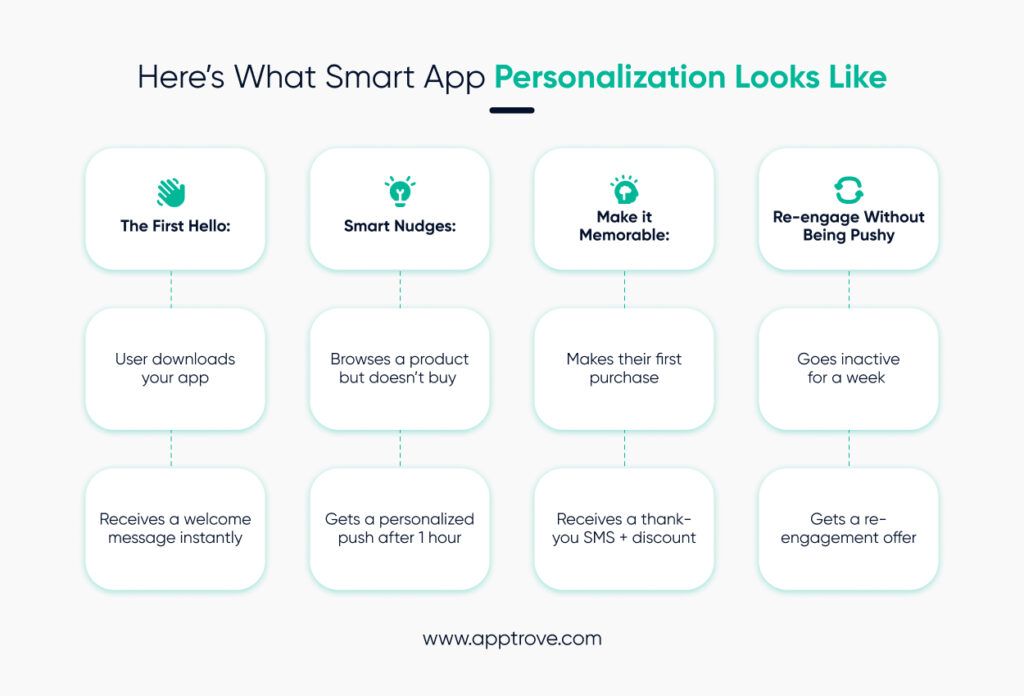
6 App Personalization Strategies You Should Already Be Using
A lot of apps get off on the right foot, but don’t move beyond the onboarding phase of creating personalization and treating users like they are just another number. But there is more to great app personalization than setting things up once and then taking a break.
Great app personalization is about creating a dynamic environment that adapts responsively to user behavior, preferences, and contextual elements, in real-time. Whatever your goals may be for retention, lifetime value, or higher quality engagement with your users, here are 6 ways you can personalize your app with purpose:
1. Collect the Right Data And Make It Actionable
Every great app personalization strategy starts with data. Most companies collect too much data, and in fact don’t know how to use it effectively. If they actually do make a lot of the data into insights at all, then there are others that just don’t collect the right data.
The most important part of data collection is focusing on behavioral and contextual data rather than demographic data.
The key here is to focus on behavioral and contextual data rather than just demographic data. Of course, it is always a good reference point to know the age and location of a user, although it is not as influential as knowing how they interact with the app overall and behaviorally. Here is a representative set of data points to collect:
- Demographics: Age, gender, profession, and location.
- Behavioral Insights: When and how users interact with the app, session frequency, and duration.
- Device and b Patterns: Device type, OS preferences, and interaction history.
- Purchase History & Preferences: Past transactions, product interests, and browsing behavior.
With Apptrove’s advanced tracking capabilities, businesses can segment users effectively and extract meaningful insights to refine their personalization strategies.
2. Push Notifications That Don’t Feel Pushy
Push notifications have a dual reputation of either being highly effective or incredibly intrusive. The difference lies in how they’re executed. A well-timed, relevant push notification is a powerful re-engagement tool.
Apptrove data analytics help brand intelligent, behavior-driven notifications that resonate with users rather than alienate them. Instead of generic messages, brands can use:
- Contextual Notifications: Based on in-app behavior and real-time activity.
- Location-Based Alerts: Personalized offers or reminders triggered by user location.
- Interest-Based Updates: Notifications about new features or content aligned with user preferences.
3. Segment Like You Actually Know Your Users
Not all users interact with your app the same way. Audience segmentation allows you to create tailored experiences for different user types without overwhelming any individual. Effective segmentation strategies include:
- Engagement tiers (new users vs. loyal users)
- Behavioral cohorts (frequent purchasers vs. window shoppers)
- Contextual groups (mobile vs. tablet users, different time zones)
4. Recommend With Precision, Not Assumption
The distinction between “Here’s something you may like” and “Here’s exactly what you require” is considerable. Recommendations are where app personalization comes to life, however, recommendations need to be based on effective algorithms, not assumptions, for quality results.
5. Deliver Deals That Feel Exclusive
When it comes to mobile marketing, personalized offers are some of the best performing strategies, but only when they are truly personalized. App personalization can come in the form of discounts based on recent purchases or a wishlist, geographical discounts based on the last known user, or even notable touch-points based on usage milestones.
These types of app personalization can be automated by marketers with user-specific promo codes and other time-sensitive discounts based on real-time usage.
Marketers can automate this kind of personalization, generating user-specific promo codes and time-sensitive offers based on real-time usage data.
6. Test, Learn, Repeat
Personalization is not a perfect science, and is iterative. What works today may not work tomorrow. That is why constant experimentation is so important.
With A/B testing, you can:
- Experiment with onboarding flows for different segments
- Test CTAs, headlines, and visuals for effectiveness
- Identify optimal send times for notifications
Beyond A/B tests, gather qualitative feedback through in-app surveys, reviews, and customer interviews. These insights reveal the why behind the what, helping you build empathy into your personalization strategy.
To Wrap It Up
Users want their apps to cater to them as individuals. If businesses don’t provide personalized experiences, they risk reputational and revenue loss.
From e-commerce to gaming to finance, app personalization strategies can completely change the user experience by creating higher satisfaction, retention, and conversions. With advances in AI/ML, it’s easier than ever to implement personalization which allows brands to create a dynamic, intuitive experience at scale.
By prioritizing app personalization, businesses can strengthen their connection with users, increase brand loyalty, and drive long-term success. Whether through tailored recommendations, adaptive interfaces, or personalized advertising, the key to winning in the mobile app space lies in making every user feel like the app was built just for them.
At the end of the day, users simply do not remember apps that work, but what they do remember are the apps that work for them. So, if you’re looking to enhance your app personalization strategy, Apptrove can help mobile marketers create a more authentic, higher-converting experience, whether it’s dynamic user segmentation or smarter retargeting. Get in touch today and cut churn in half!
Frequently Asked Questions
1. What is app personalization in mobile marketing?
App personalization is the process of tailoring an app’s content, UI, and experiences based on user data like behavior, preferences, location, and usage history. It improves retention, engagement, and overall user satisfaction.
2. Why is app personalization important?
That is because users today expect experiences that are tailored to them. Personalized apps see 30–50% higher retention rates and up to 44% repeat visits, making it a critical strategy for any serious mobile marketer.
3. What kind of data should I collect for effective app personalization?
Focus on behavioral, contextual, and purchase data:
– Session frequency, in-app activity
– Device type, time of use
– Location, past purchases
– Avoid relying solely on demographic data—it’s less predictive of actual user behavior.
4. How does app personalization affect app revenue?
Studies show that personalized in-app recommendations can boost conversions by 30% or more. Personalized promotions, content, and offers directly impact purchase behavior and LTV.
5. Can I use app personalization without coding?
Yes! With platforms like Apptrove, marketers can implement personalization with low-to-no-code tools that segment users, automate triggers, and optimize engagement — no dev dependencies required.
